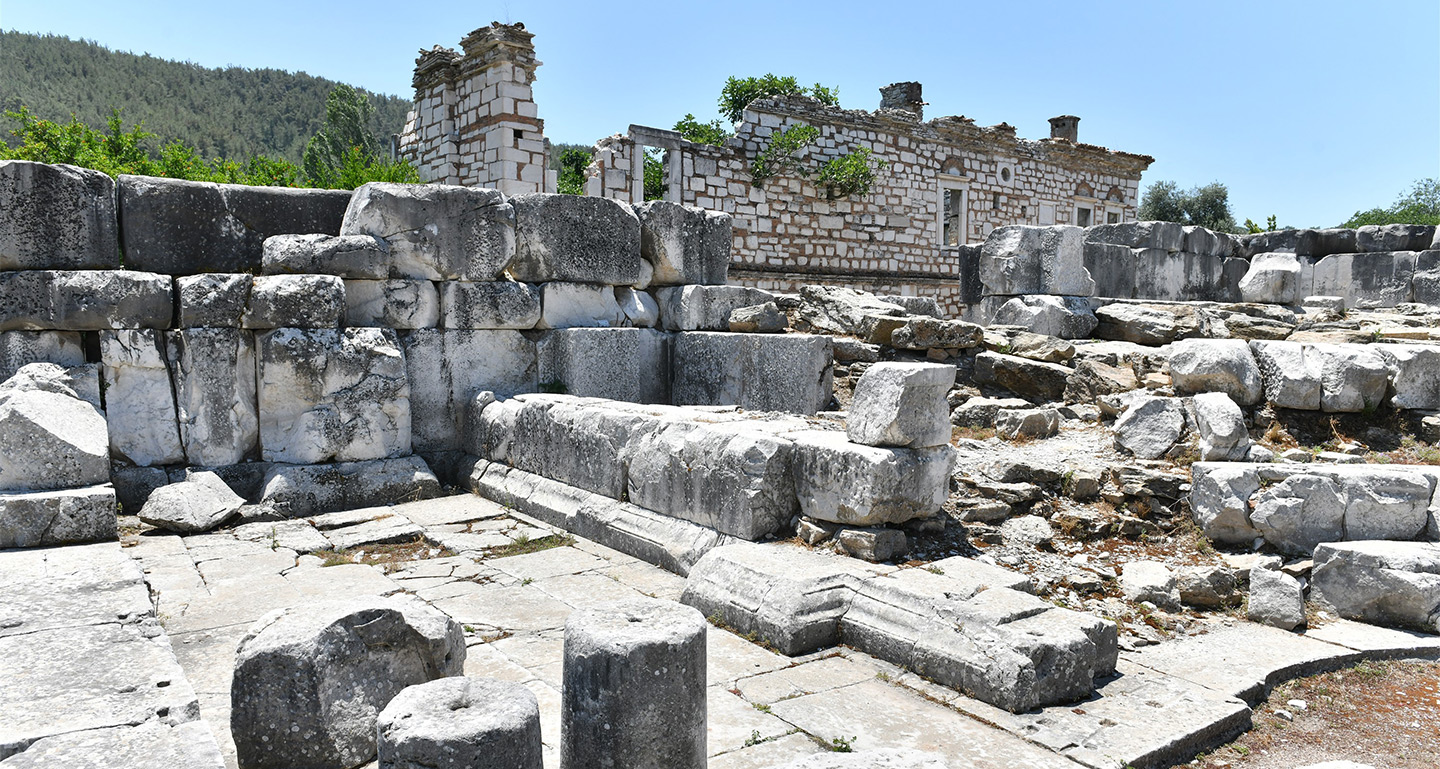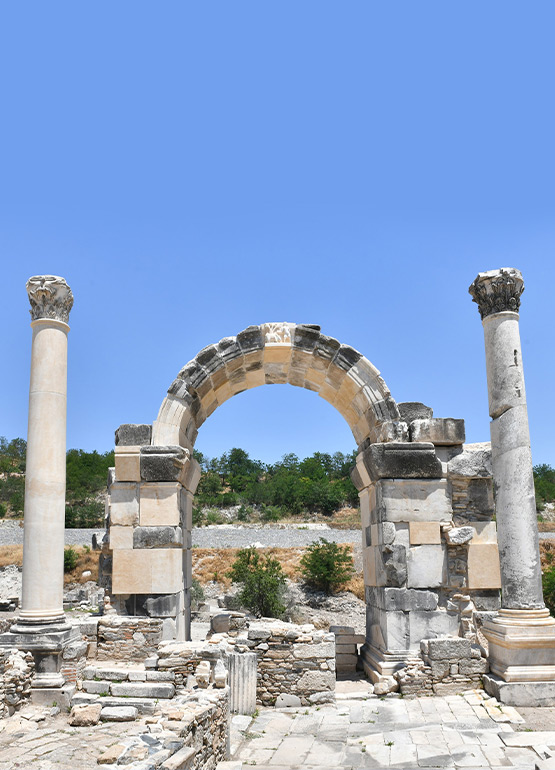The Ancient City of Stratonikeia, which is an important settlement among the cities in the inner part of the Caria region and on the passageway connecting the sea and the inner regions, is known as the place where the Carians gathered before the Hellenistic Period.
The oldest finds in Stratonikeia date back to the 3rd millennium BC. It is possible to see 9 different periods in the city, layered on top of each other. Due to this multiculturalism, a different period is protected in each area according to the ruins found as a result of the studies carried out. In Stratonikeia, one of the rare historical settlements where there are structures from the Ancient Period, Ottoman and Republican Periods, and where a 2,200-year history difference is experienced between the two feet you step on; It is a living city where centuries-old values are preserved, where you can take breaks in the village cafes of the Early Republican Period, while wandering through the stone-paved historical streets of the Ottoman Period, among the ruins of the Ancient Period, as if in a time tunnel.
Although the tombs found date back to the 3rd millennium BC, written information and settlement findings date back to the end of the 2nd millennium BC. The accounts of ancient writers Herodotus, Strabo, Pausanias and Byzantine Stephanos also confirm that there was a pre-Hellenistic settlement here. The name of the city was changed by the Seleucid king Antiochus I, starting from the 2nd quarter of the 3rd century BC, to the name of Stratonike, first his stepmother and then his wife.
In the ancient city, there are Hellenistic and Roman period structures such as theatre, gymnasium, bouleuterion, library, streets with columns, baths, as well as churches, houses, roads and arched structures, etc. Works from the Byzantine Period and Turkish Period baths, mosques, shops, fountains, village squares and stone-paved roads are intertwined.
The building, which was found to be a library as a result of the excavations carried out in the city with the support of İş Bankası, is one of the largest libraries of the ancient period. Apart from its size, it is currently the only example built in this plan type in Anatolia. Another building similar to the plan type of this building is the library in the ancient city of Timgad in North Africa. Since the Stratonikeia example is older, it is thought that the library in Timgad was influenced by it.
As a result of the archaeological studies that started in 2019 in the Stratonikeia Library structure and its surroundings, the reading hall, the library courtyard, the western, eastern and northern porticoes, side spaces and floor mosaics were unearthed. It is planned to raise the columns of the courtyard section with anastylosis-oriented restorations to be carried out here in the future.


